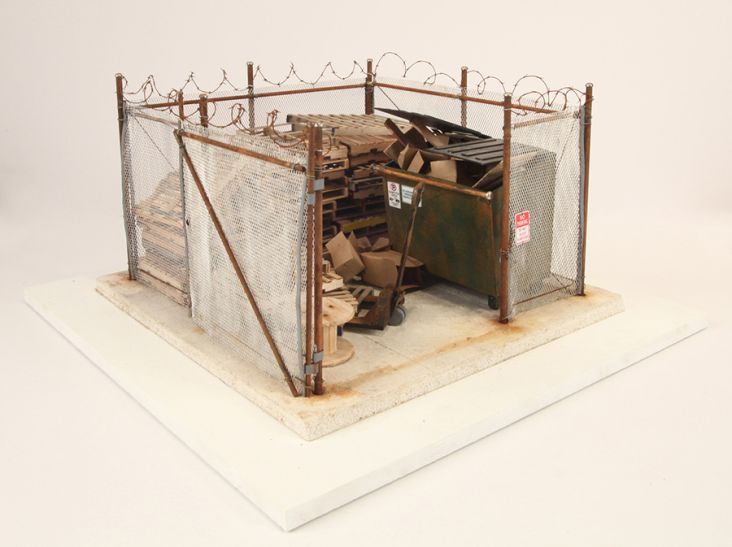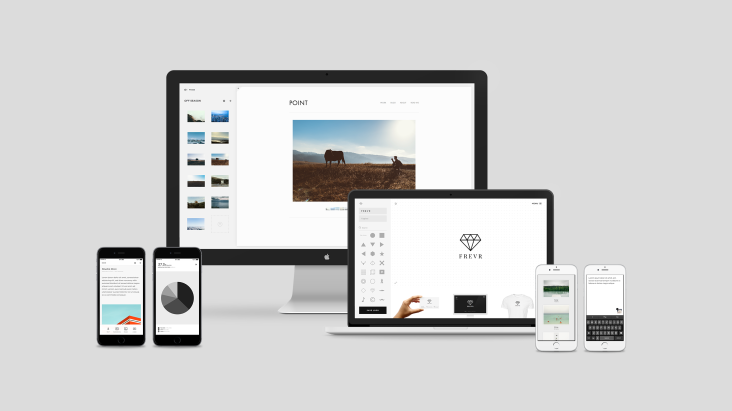The Alternative Guide to Public Speaking: From cowardly to courageous in 10 simple steps
For three years I was the compere at a charity comedy and live music night: doing links between the bands, warming up the crowd for pro-circuit comedians. I’d be nervous for a full week before the gig, right up to strutting on stage and grabbing the mic.

Image licensed via Adobe Stock
I’ve felt the high of 80 people in loud laughter, and also seen my material crash and burn to stonewall silence – in comedians' parlance, I "died on my arse" – but guess what, Glenn, you’re straight back on stage to do another five minutes after the break… that’s when I’d feel the fear, quaking in a toilet cubicle, wishing there was someone else to do it for me.
This guide should help you avoid that dreadful moment, empowering you to get the best of your nerves, filling you with the swagger you need to make your presentation a glowing success. (I’ve spent big chunks of my day job attending marketing conferences btw, so I’ve witnessed and critiqued hundreds of presentations).
First off, Step Ground Zero: Prepare Some Material You Believe In
Put your heart and soul into making your presentation interesting, insightful and varied. Research your audience. Employ whatever tone, imagery and video you think will suit them best. You need to believe in your material if you’re going to ‘sell’ it to the crowd.
Step 1: Remember There’s An Audience of People
That might sound silly, but surprisingly few presenters seem to consider the obligations and opportunities this throws up. If the crowd are to feel fully engaged, they need to feel involved. That’s why comedians usually ask the front row what jobs they do, then rib them for it. It’s to subtly enforce the idea that they are part of the show too.
There’s a difference between talking in front of an audience and talking to an audience. For beginners, try stuff like referring to them a lot, either collectively, ‘you guys’ or in groups, the ‘history buffs among you’ or ‘you latecomers in the back row’ or individually, i.e. “I can see you nodding sir, you know what I’m talking about, don’t you!”
It lets them know you’re not taking them for granted, and they’ll subconsciously thank you for it, remaining engaged because they suspect the spotlight could be thrown on them at any time.
A show of hands, dragging volunteers onstage, voting buttons or anything you can think of that makes the communication interactive, get it in there, the more, the merrier.
Step 2: Never Be Afraid of Actually Getting What You Wanted
You want this. On some level anyway, even if you’ve been sent to do it. You want to impress people, get your name known, generate new business, and get your message across. You might dread the spotlight, but you crave the result, ergo, you want this.
Turn nerves into excitement by owning them. Look yourself in the mirror and ask yourself “what’s the point of being afraid of getting what you wanted?”
Step 3: Switch Your Voice Box to ‘Manual’
Nerves murder your delivery: they can make you monotone; they might even make you whisper. So speak up, cannon the words out of your mouth and consciously add some bounce to your voice.
Go faster, go slower, go pitchy, go deeper; mix it up as you practice. Watch some courtroom dramas, see how barristers do it. Sometimes mellifluous, sometimes outright booming – or bright and breezy, then slo-mo and assiduously measured – the variety is there to keep the jury switched on, so they don’t miss a beat.
Going slow, with lots of pauses like Barrack Obama, allows your brain to catch up with your mouth. I suspect a primary reason Obama uses all those little pregnant pauses is he’s conditioned himself not to ‘um’ and ‘er’. Go slowly; you’ll see an um coming – kill it with an intake of breath and stand there, head up, looking all confident and exciting. Then carry on, um-lessly.
It’s not easy at first, but I did it – I never ‘um’ now when speaking, and it adds gravitas to your game.
Step 4: Are you Funny, Honestly?
If you’re funny, and I mean genuinely, you make people laugh all the time, start with a joke. But practice it 100 times, make sure you’re emphasising the right words and the timing’s immaculate.
If you’re going to try to amuse, it’s worth understanding why people laugh. It’s effortless: they laugh out of surprise, and to feel a bit superior, i.e. with puns, if you ‘get it’ you feel smart, if the punch-line came as a surprise, your brain celebrates with a laugh. I wouldn’t recommend any punning in your speech, but a story with a twist in the tale would probably go down a treat.
If you’re not confident of getting the best out of a joke-joke, there are other ways to give the presentation personality and build rapport. Maybe graphic descriptions about how frustrated you were before finding a solution to a problem, or perhaps being super open and talking about any peculiarities of the way you work – tell the truth with an open heart and people will love you for it.
Step 5: Learning Your Lines to Performance Standard
So you’ve tweaked your material, worked out your lines. Type it up using CAPS for the words you emphasise and places to pause for effect dot dot dot… or whatever other system records how to perform it. Writing and practising is one fluid circular process, so always think how you can optimise the delivery, adjusting which words you skim over and words you BOOM or linger on - and retype it every time you change it.
When you’re sure it’s tip-top, write it out in long-hand six times. You’ll be surprised how well you’ve memorised it by then – there’s something about interacting with a pad and pencil that makes stuff stick.
Read the final version every spare minute you get. On the big day, keep it in your pocket. Merely having it touching you is hugely reassuring – you won’t need if you’ve got it, you’ll pine for it if you don’t.
Step 6: Cue Cards are dead, Long Live Jog Cards
There’s no shame in cue cards. But make them robust ‘jog cards’ which go beyond bullet points: “Beginnings……………to ends of sentences/paragraphs” work best. You want enough on the card to jog your brain, but so little, it’s impossible to read aloud. Anything you’ve struggled to memorise, facts and stats and quotes, write out in full.
Don’t be embarrassed by having a stack of cards. I think two or three per minute is a good number to ensure you feel confident and ultra-prepped.
However, DO NOT do what one best man I know did: during his speech, drunk and anxious, as he was talking, he absentmindedly fidgeted and shuffled his cue cards like he was about to deal a hand of poker… it wrecked his running order and freaked him out so bad he fumbled the whole pack. As he was crawling around under the table, someone else took the liberty of making the toast on his behalf, and he’ll die before he lives it down.
Don’t be that guy.
Step 7: Breathe The Pressure, Yoga Style
Now for the science bit: carbon dioxide is more substantial than oxygen, so it sits at the bottom of your lungs waiting to be expelled. By breathing from there, rather than your nose and mouth, you can imbibe a higher ratio of nature’s sedative, C02 and chill out 100% organic-style.
Use your stomach muscles to push air up in your mouth, wait for a second or two and breathe it out, then repeat. You’ll know you’re doing it right if you feel a draught hitting the roof of your mouth.
This technique works like a dream – it slows the heart rate and switches off nervous sweating – use it whenever you feel jittery in the run-up. The pure mental focus on the process, allied to heightened levels of C02 in the bloodstream, will have you back in total charge of your nerves within 5 minutes. You’ll also find it helpful for getting to sleep the night before.
Step 8: Work the Room
Before your talk, don’t lock yourself away, quietly doing your head in. Get around the room, introduce yourself, make as many new friends as you can. Not only will it help boost the number of friendly faces in the audience, but it’ll also warm up your voice, get you in the mood for random questions and take your mind off the challenge ahead.
Before the comedy nights, my warm-up was giving out flyers, selling tickets, seeing how many people I could tickle into becoming last-minute walk-ins. Find your equivalent and get stuck in.
Step 9: Admit You’re Nervous
There’s no point being all relaxed in the run-up, then bricking it onstage. It’s cool to admit to being nervous as you make your rounds (particularly to the other presenters – the other people in the gig are usually there for you). Acting cool beforehand and having your skin frost over with fear once you’re on stage is a disaster. Get it all out beforehand. Keep moving. Fidget away. Bounce up and down on the balls of your feet. Pace the Green Room, or the streets if you like.
I’ve worked with comedians who’ve worked 1,000 seat theatres – and seen them go right to the verge of a major panic attack before going on stage in the basement of a pub. Chanting backstage, “I can’t do it, I don’t know what to say to them” – before strolling into the spotlight and having the time of their lives.
Step 10: Curtain Call
Make sure you agree on a five-minute call before you go on so that you can sort yourself out. Tell yourself there’s no room for being nervous any more because it’s SHOWTIME BABY…
Have you seen 8 Mile? How Eminem raps in the toilet mirror before he goes on stage? I do that too. If gangsta rap’s not your thing, sing your fave upbeat song, do some ‘doh-ray-mes’, some ‘she-sells-sea-shells’, get your lips loose and your vocal cords limber…dance around, clap your hands, make sure you get those last drops of nervous energy out in the bathroom beforehand.
Another essential part of the final warm-up is visualisation. Cristiano Ronaldo, arguably the best soccer player in the world, before he hits a free-kick, holds a specific pose: arms hang loose, chest puffed out, eyes tight shut. He’s blocking out the world, gazing into his mind's eye and imagining the impending free-kick sailing over the wall into the bottom corner of the net, so the crowd explodes with joy.
For me, visualisation involves imagining, in lurid detail, a laughing applauding audience having a crackin’ night out. Yours might be heads-on-one-side rapt attention, people walking forward to shake your hand and ask for your business card. Whatever. Work it out. Then imagine hard while doing your yoga belly breathing, and it will all come true.
You’ve worked hard, and you’re super prepared, both materially and mentally…you’re ready for anything. I would wish you luck, but you’re not going to need it. Get stuck in.






 using <a href="https://www.ohnotype.co/fonts/obviously" target="_blank">Obviously</a> by Oh No Type Co., Art Director, Brand & Creative—Spotify](https://www.creativeboom.com/upload/articles/6e/6ed31eddc26fa563f213fc76d6993dab9231ffe4_732.jpg)
 by Tüpokompanii](https://www.creativeboom.com/upload/articles/58/58684538770fb5b428dc1882f7a732f153500153_732.jpg)















